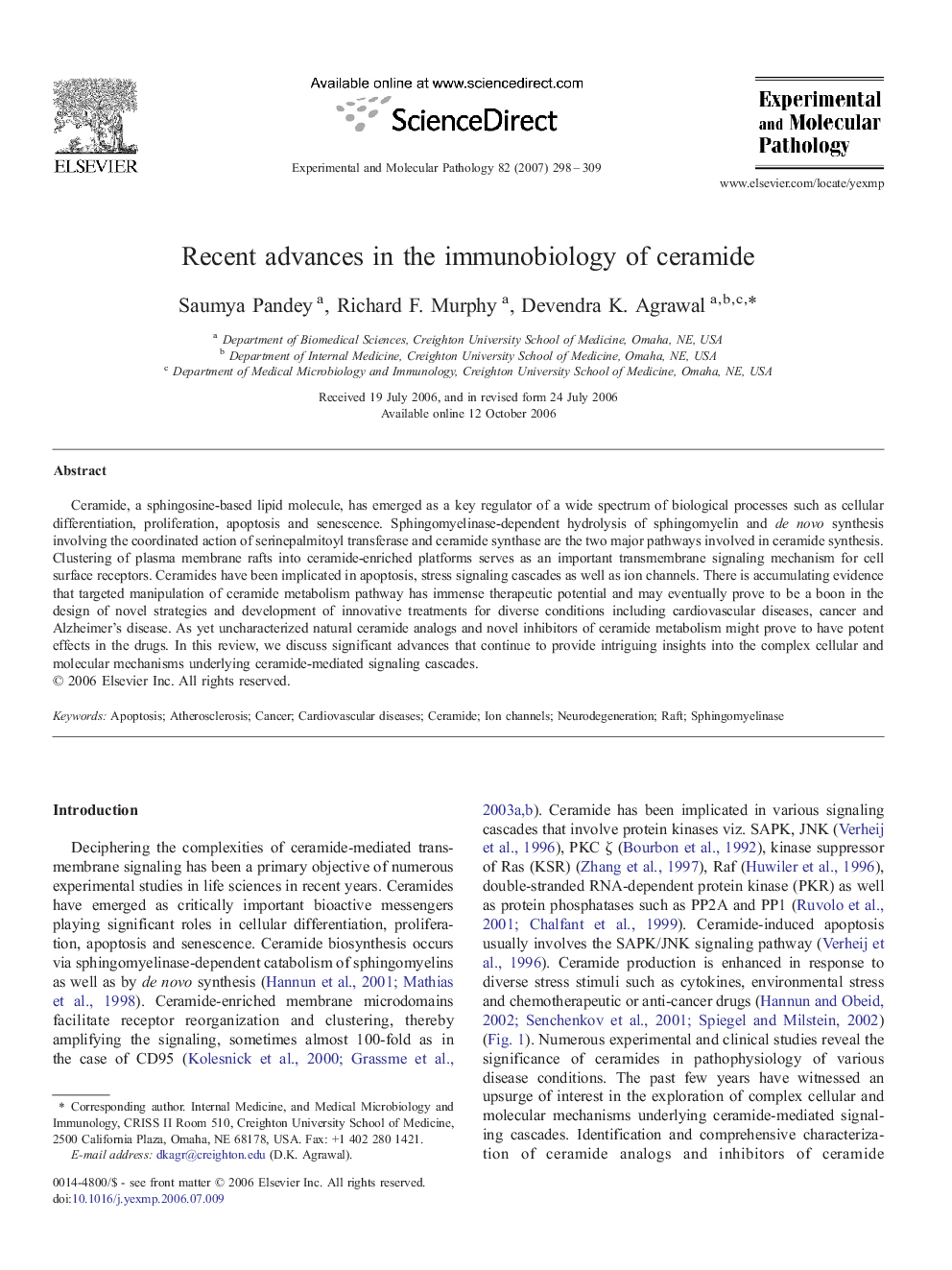| Article ID | Journal | Published Year | Pages | File Type |
|---|---|---|---|---|
| 2775893 | Experimental and Molecular Pathology | 2007 | 12 Pages |
Ceramide, a sphingosine-based lipid molecule, has emerged as a key regulator of a wide spectrum of biological processes such as cellular differentiation, proliferation, apoptosis and senescence. Sphingomyelinase-dependent hydrolysis of sphingomyelin and de novo synthesis involving the coordinated action of serinepalmitoyl transferase and ceramide synthase are the two major pathways involved in ceramide synthesis. Clustering of plasma membrane rafts into ceramide-enriched platforms serves as an important transmembrane signaling mechanism for cell surface receptors. Ceramides have been implicated in apoptosis, stress signaling cascades as well as ion channels. There is accumulating evidence that targeted manipulation of ceramide metabolism pathway has immense therapeutic potential and may eventually prove to be a boon in the design of novel strategies and development of innovative treatments for diverse conditions including cardiovascular diseases, cancer and Alzheimer's disease. As yet uncharacterized natural ceramide analogs and novel inhibitors of ceramide metabolism might prove to have potent effects in the drugs. In this review, we discuss significant advances that continue to provide intriguing insights into the complex cellular and molecular mechanisms underlying ceramide-mediated signaling cascades.
